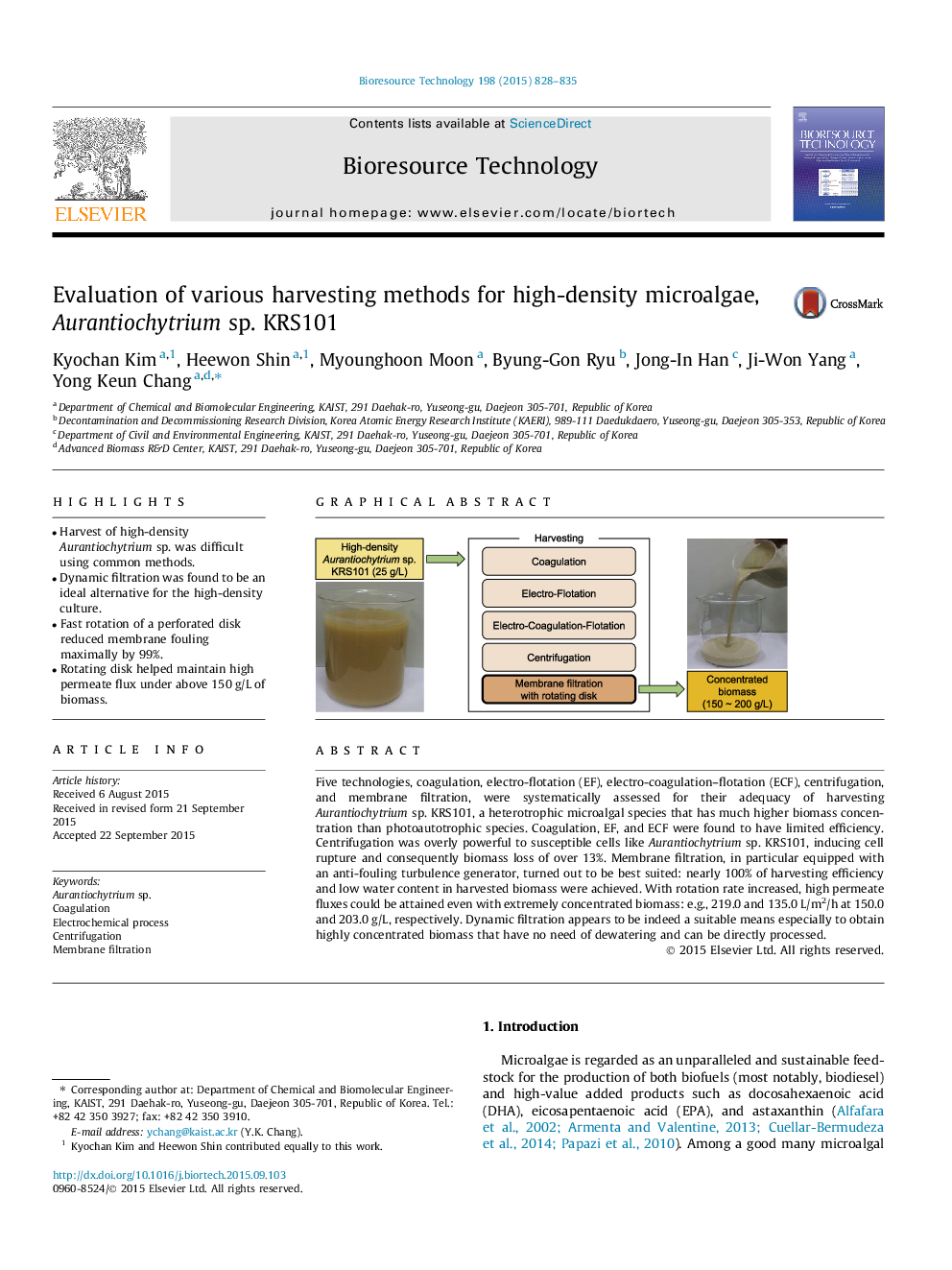| Article ID | Journal | Published Year | Pages | File Type |
|---|---|---|---|---|
| 679481 | Bioresource Technology | 2015 | 8 Pages |
•Harvest of high-density Aurantiochytrium sp. was difficult using common methods.•Dynamic filtration was found to be an ideal alternative for the high-density culture.•Fast rotation of a perforated disk reduced membrane fouling maximally by 99%.•Rotating disk helped maintain high permeate flux under above 150 g/L of biomass.
Five technologies, coagulation, electro-flotation (EF), electro-coagulation–flotation (ECF), centrifugation, and membrane filtration, were systematically assessed for their adequacy of harvesting Aurantiochytrium sp. KRS101, a heterotrophic microalgal species that has much higher biomass concentration than photoautotrophic species. Coagulation, EF, and ECF were found to have limited efficiency. Centrifugation was overly powerful to susceptible cells like Aurantiochytrium sp. KRS101, inducing cell rupture and consequently biomass loss of over 13%. Membrane filtration, in particular equipped with an anti-fouling turbulence generator, turned out to be best suited: nearly 100% of harvesting efficiency and low water content in harvested biomass were achieved. With rotation rate increased, high permeate fluxes could be attained even with extremely concentrated biomass: e.g., 219.0 and 135.0 L/m2/h at 150.0 and 203.0 g/L, respectively. Dynamic filtration appears to be indeed a suitable means especially to obtain highly concentrated biomass that have no need of dewatering and can be directly processed.
Graphical abstractFigure optionsDownload full-size imageDownload as PowerPoint slide
